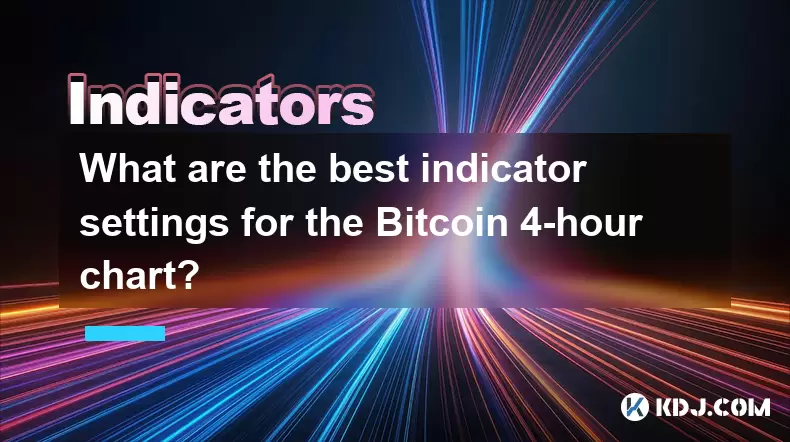-
 Bitcoin
Bitcoin $118400
0.39% -
 Ethereum
Ethereum $3814
2.17% -
 XRP
XRP $3.547
1.34% -
 Tether USDt
Tether USDt $1.000
0.00% -
 BNB
BNB $769.5
2.95% -
 Solana
Solana $191.7
6.36% -
 USDC
USDC $0.9999
0.01% -
 Dogecoin
Dogecoin $0.2722
7.75% -
 Cardano
Cardano $0.8995
5.59% -
 TRON
TRON $0.3158
-0.78% -
 Hyperliquid
Hyperliquid $47.37
4.46% -
 Stellar
Stellar $0.4848
3.54% -
 Sui
Sui $4.031
1.72% -
 Chainlink
Chainlink $20.11
3.94% -
 Hedera
Hedera $0.2832
3.16% -
 Avalanche
Avalanche $26.20
4.27% -
 Bitcoin Cash
Bitcoin Cash $530.5
0.67% -
 Shiba Inu
Shiba Inu $0.00001568
3.59% -
 Litecoin
Litecoin $118.4
1.42% -
 UNUS SED LEO
UNUS SED LEO $8.976
-0.23% -
 Toncoin
Toncoin $3.349
2.54% -
 Polkadot
Polkadot $4.590
2.54% -
 Uniswap
Uniswap $10.56
-0.59% -
 Ethena USDe
Ethena USDe $1.001
0.00% -
 Monero
Monero $327.7
0.39% -
 Pepe
Pepe $0.00001422
2.62% -
 Bitget Token
Bitget Token $4.973
-1.22% -
 Dai
Dai $1.000
0.02% -
 Aave
Aave $331.9
1.59% -
 Bittensor
Bittensor $429.6
-0.56%
What are the best indicator settings for the Bitcoin 4-hour chart?
Traders use technical indicators like EMAs, RSI, MACD, and Bollinger Bands on Bitcoin’s 4-hour chart to analyze trends, momentum, and volatility for informed trading decisions.
Jul 21, 2025 at 07:56 pm

Understanding the Role of Indicators in Bitcoin Trading
In the volatile world of Bitcoin trading, technical indicators play a crucial role in analyzing price movements and predicting future trends. Traders often rely on specific tools to interpret market data, especially when focusing on timeframes like the 4-hour chart. This timeframe strikes a balance between short-term fluctuations and longer-term trends, making it ideal for swing traders and active investors.
Using the right indicator settings can significantly improve decision-making accuracy. However, there is no one-size-fits-all solution; optimal settings depend on individual strategies, risk tolerance, and market conditions. The key lies in selecting indicators that align with your trading goals and adjusting their parameters accordingly.
Selecting Moving Averages for Smoother Trend Analysis
Moving averages (MAs) are among the most commonly used indicators in crypto trading. For the Bitcoin 4-hour chart, many traders prefer combinations of Exponential Moving Averages (EMAs) due to their responsiveness to recent price changes.
A popular setup involves using the 9-period EMA and 21-period EMA together. The 9 EMA reacts quickly to price shifts, while the 21 EMA offers a broader trend perspective. When the 9 EMA crosses above the 21 EMA, it may signal a bullish trend, and vice versa for bearish signals.
Some traders also add the 50-period Simple Moving Average (SMA) to filter out noise and identify long-term support or resistance levels. It’s essential to test these settings across historical data before applying them in live trading scenarios.
Optimizing RSI Settings for Overbought and Oversold Detection
The Relative Strength Index (RSI) is a momentum oscillator that helps traders identify overbought or oversold conditions. On the 4-hour Bitcoin chart, an RSI setting of 14 periods is standard, but some traders adjust it to 7 or 10 periods for increased sensitivity.
When using the 14-period RSI, values above 70 typically indicate overbought conditions, while readings below 30 suggest oversold territory. These thresholds can help detect potential reversals or corrections.
- Ensure the RSI is applied correctly by checking its alignment with candlestick patterns.
- Combine RSI with other confirmation tools like volume or moving average crossovers.
- Avoid relying solely on RSI during strong trending markets where overbought/oversold levels can persist.
It's important to note that RSI works best in ranging markets and should be interpreted cautiously during high volatility phases common in Bitcoin trading.
Using MACD for Confirming Trend Strength and Reversals
The Moving Average Convergence Divergence (MACD) is another powerful tool for confirming trend strength and identifying potential reversals. For the Bitcoin 4-hour chart, a common configuration includes the default settings: 12-period fast EMA, 26-period slow EMA, and 9-period signal line.
Key aspects of using MACD effectively:
- Look for MACD line crossing above the signal line as a bullish signal.
- A cross below the signal line may indicate bearish momentum.
- Pay attention to histogram bars growing in size as a sign of increasing momentum.
Traders often combine MACD with price action analysis to avoid false signals, especially during consolidation phases. Additionally, divergence between price and MACD can provide early warnings of potential trend reversals.
Incorporating Bollinger Bands for Volatility Insights
Bollinger Bands are invaluable for assessing volatility and spotting breakout opportunities. On the 4-hour Bitcoin chart, the standard setting of 20-period SMA with 2 standard deviations works well for most traders.
Observations to consider:
- Prices touching the upper band may indicate overbought conditions.
- Touches on the lower band could signal oversold situations.
- A contraction in band width suggests decreasing volatility, potentially leading to a breakout.
For more nuanced insights, traders sometimes use multiple Bollinger Bands with different standard deviations or combine them with volume indicators to confirm breakout validity.
Avoid using Bollinger Bands in isolation, especially in highly volatile markets where prices can stay at extremes for extended periods.
Frequently Asked Questions
Q: Can I use the same indicator settings for Ethereum or other cryptocurrencies?
While similar principles apply, each cryptocurrency has unique volatility and liquidity characteristics. It’s advisable to backtest any indicator settings on the specific asset you’re trading before committing real capital.
Q: Should I adjust my indicator settings during major news events?
Yes. Market-moving news can cause erratic price behavior. During such times, consider increasing smoothing periods or temporarily switching to volume-based indicators for better clarity.
Q: How do I know if an indicator is lagging too much for effective trading?
If the indicator consistently gives signals after the move has already occurred, it may be too lagging for your strategy. Consider combining it with leading indicators like price action or order flow data.
Q: Is it better to use fewer indicators with optimized settings or multiple indicators simultaneously?
Quality over quantity usually yields better results. Using too many indicators can lead to confusion and conflicting signals. Focus on mastering a few well-configured tools rather than overwhelming yourself with overlapping data sources.
Disclaimer:info@kdj.com
The information provided is not trading advice. kdj.com does not assume any responsibility for any investments made based on the information provided in this article. Cryptocurrencies are highly volatile and it is highly recommended that you invest with caution after thorough research!
If you believe that the content used on this website infringes your copyright, please contact us immediately (info@kdj.com) and we will delete it promptly.
- Crypto Stocks, Stablecoin Law & Trump: A New Era?
- 2025-07-22 02:30:12
- Kaito, Web3, and Crowdfunding: A New Era of Capital Alignment?
- 2025-07-22 02:30:12
- Saylor, Trump, and Bitcoin: A New York Minute on Crypto's Power Trio
- 2025-07-22 00:50:12
- Strategy, Bitcoin, and $122,000: A New York Minute on Crypto's Latest Moves
- 2025-07-22 00:50:12
- Dogecoin Price Prediction: Will the Pump Continue?
- 2025-07-22 01:50:12
- AVAX Price, Mining Rewards, and PI Price: What's the Buzz?
- 2025-07-22 01:50:12
Related knowledge

Advanced RSI strategies for crypto
Jul 13,2025 at 11:01am
Understanding the Basics of RSI in Cryptocurrency TradingThe Relative Strength Index (RSI) is a momentum oscillator used to measure the speed and chan...

Crypto RSI for day trading
Jul 12,2025 at 11:14am
Understanding RSI in the Context of Cryptocurrency TradingThe Relative Strength Index (RSI) is a momentum oscillator used to measure the speed and cha...

Crypto RSI for scalping
Jul 12,2025 at 11:00pm
Understanding RSI in the Context of Crypto TradingThe Relative Strength Index (RSI) is a momentum oscillator widely used by traders to measure the spe...

What does an RSI of 30 mean in crypto
Jul 15,2025 at 07:07pm
Understanding RSI in Cryptocurrency TradingRelative Strength Index (RSI) is a momentum oscillator widely used in cryptocurrency trading to measure the...

What does an RSI of 70 mean in crypto
Jul 13,2025 at 06:07pm
Understanding the RSI Indicator in Cryptocurrency TradingThe Relative Strength Index (RSI) is a widely used technical analysis tool that helps traders...

Does RSI work in a bear market for crypto
Jul 16,2025 at 01:36pm
Understanding RSI in Cryptocurrency TradingThe Relative Strength Index (RSI) is a momentum oscillator used by traders to measure the speed and change ...

Advanced RSI strategies for crypto
Jul 13,2025 at 11:01am
Understanding the Basics of RSI in Cryptocurrency TradingThe Relative Strength Index (RSI) is a momentum oscillator used to measure the speed and chan...

Crypto RSI for day trading
Jul 12,2025 at 11:14am
Understanding RSI in the Context of Cryptocurrency TradingThe Relative Strength Index (RSI) is a momentum oscillator used to measure the speed and cha...

Crypto RSI for scalping
Jul 12,2025 at 11:00pm
Understanding RSI in the Context of Crypto TradingThe Relative Strength Index (RSI) is a momentum oscillator widely used by traders to measure the spe...

What does an RSI of 30 mean in crypto
Jul 15,2025 at 07:07pm
Understanding RSI in Cryptocurrency TradingRelative Strength Index (RSI) is a momentum oscillator widely used in cryptocurrency trading to measure the...

What does an RSI of 70 mean in crypto
Jul 13,2025 at 06:07pm
Understanding the RSI Indicator in Cryptocurrency TradingThe Relative Strength Index (RSI) is a widely used technical analysis tool that helps traders...

Does RSI work in a bear market for crypto
Jul 16,2025 at 01:36pm
Understanding RSI in Cryptocurrency TradingThe Relative Strength Index (RSI) is a momentum oscillator used by traders to measure the speed and change ...
See all articles

























































































